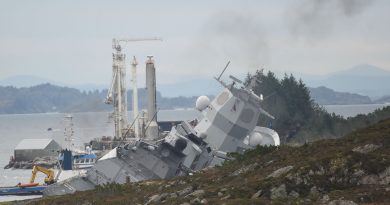World oil price decline siphons billions of dollars expected by Alaska

While oil prices have dropped more than 50 percent in the last six months, the decline in the Alaska oil production tax will be even larger — 80 percent and climbing.
The incredible shrinking tax, which generated $6 billion in 2012, $4 billion in 2013 and $2.6 billion in fiscal year 2014, is expected to slide to $524 million this year and $308 million in the fiscal year starting next July. That latter figure is about what the Legislature appropriates each year in undesignated general funds to run the state jail system or maintain the road system.
In the meantime, the state is paying out more in total credits to the oil and gas industry than it collects in production taxes, a striking reversal of fortunes that is likely to get worse in the next fiscal year, according to statistics from the Department of Revenue.
The tax shrinkage is not chiefly because of provisions the Legislature included when it enacted SB 21 in 2013 or because voters rejected an effort to repeal the law in the August primary. It’s because the collapse in world oil prices has sliced from $5 billion to $6 billion off the value of the oil expected to be shipped in the trans-Alaska pipeline this year.
Tax based on percentage of net profits
Unlike most states, which use a tax on gross value, oil taxes in Alaska, since 2006, have been based on a percentage of net profits — a relationship that magnifies the budget impact of every dollar drop in the price of oil. The state chose this option as part of a balancing act in which it would collect a higher tax when oil prices shot up and a lower tax when oil prices tanked.
In the years of plenty under governors Sarah Palin and Sean Parnell, there was little emphasis on what would happen if oil prices collapsed under a net profits tax, and thresholds of $90 or $100 became planning benchmarks in most discussions. Now it seems that a threshold of $50 deserved a good deal more study.
One question about the SB 21 tax change that is only now starting to come into focus was whether the state achieved the right balance when it sharply lowered the tax rate for oil at high prices and raised the tax somewhat at lower prices, incorporating a per barrel tax credit plan that peaks when oil prices drop below $80.
The profits tax is calculated only after subtracting billions in oil company expenses. These are costs to develop, produce and transport oil — currently pegged at about $8.5 billion — that don’t change much in the short term, regardless of whether oil is selling for $55, as it was this week, or $112, as it was in July.
The fiscal year began with all the taxable oil in the pipeline this year expected to be valued at more than $17 billion, but with the market decline it has been marked down to $12 billion and could go lower if prices stay down. In either case, $8.5 billion is subtracted to get the net taxable value, a math problem with dramatic implications for the state.
Credits costly
The drop in price and the increase in credits are costly. According to the fall Revenue Sources Book, credits paid out this fiscal year are expected to be about $100 million more than the production tax income. The gap is likely to grow to $400 million in the next fiscal year.
If oil bumps back up to $66 and stays there, the fiscal year 2016 production tax would bring in close to what the state expects to collect from the combined proceeds of the taxes on corporate income, mining, fisheries, alcohol, tobacco, motor fuel and tires.
It has become standard practice for supporters of the SB 21 oil tax change to argue that the state is much better off at low prices than it would have been under ACES. That’s clearly the case when a “low” price is defined as above $80 or $90.
But when oil prices dip below $55, this part of the SB 21 system cries out for the scrutiny it never received. One Alaska authority on oil taxes said the results from either system at these prices would put Alaska in a bind. He offered this analogy: “You can be stranded on a desert island. Or you can be stranded on a desert island with a quart of water.”
The “quart of water” provision in SB 21 says that when the net profits tax would otherwise drop toward zero, an alternative tax calculation comes into play. That is the 4 percent gross tax, expected to generate about $308 million in the next fiscal year if oil taxes average $66.
Under ACES, the oil companies could claim credits to drop below the 4 percent floor. One of the many complicating factors with the oil tax system is that the companies qualify for a per-barrel credit that peaks at $8 when prices drop below $80. That maximizes credits for the companies and lowers the effective tax rate.
When the former Economic Limit Factor tax system was targeted for replacement in 2005-06 by the Murkowski administration, the effective gross tax rate of 7 percent was deemed as being too low to be sustainable over the long term. In North Dakota, which relies on a gross tax, the rate is 11 percent.
Another thing to keep in mind is that production tax is only one portion of Alaska oil revenues. As prices drop, the income from the oil owned by the state becomes more significant. As the owner of the land on which the largest oil field ever found in North America was discovered, the state collects a royalty that is typically one-eighth of the total value of the oil. This is not subject to the net profits tax.
The Revenue Department predicts that total oil revenue this fiscal year will be $2.5 billion, including about $1.6 billion in royalties, $249 million from the petroleum corporate income tax, $129 million in property taxes and $524 million from production taxes. That is $3.1 billion below the revenue in the fiscal year that ended last June.
Related stories from around the North:
anada: Will Russia’s actions in Ukraine affect relations in the Arctic Council?, Eye on the Arctic
Finland: Rouble collapse hits Finland, Forex stops buying Russian currency, Yle News
Iceland: From Arctic Circle 2013-2014, a big drop in the price of oil, Blog by Mia Bennett
Norway: Currency drama has little impact on tourism in Barents region, Barents Observer
Russia: Russian crisis money for Novatek’s Yamal LNG project, Barents Observer
Sweden: Falling oil prices benefit Sweden, Radio Sweden
United States: Economist reflects on 100 years of shifting fortunes in Anchorage, Alaska Dispatch News



